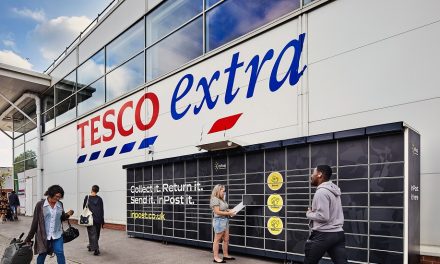
Tesco porves that UK e-fulfilment systems can be the envy of the global market
Tesco must be applauded for the deal it has struck with US supennarket chain Safeway to export its Internet shopping model. With Safeway adopting the Tesco model of picking goods from stores and abandoning its strategy of using dedicated warehouses for fulfilling online orders, it has signalled that the UK is the recognised world leader in grocery shopping via the Internet.
This is not only good for Tesco, but is great for increasing general consumer confidence in online shopping. It should help boost the whole market to the benefit of every home shopping retailer in all sorts of product categories.
Standing alone
What is good about Tesco is that two years ago, before the dotcom bubble burst and when everyone was choosing the warehouse route, it stood alone in choosing to pick from its existing chain of stores. For this, it was criticised by some City analysts. How the tables have turned. Its rationale for standing alone was a belief that opening massive warehouses in the hope of capturing the whole of the worlds online grocery market was not realistic. This has been borne out with the demise of the likes of WebVan in the US, which has burnt around US$430 million (£305 million) with no prospect of ever becoming viable. Taking a more realistic stance, Tesco looked at what the US operators were doing and made some changes, chiefly by making it economically viable. It is great that a UK company has taken an idea from the Internet start-up capital of the world. Silicon Valley on the west coast of the US developed it into a working model and exported it back to the US. Rather than world domination, it sought to simply create a working delivery service in local areas before rolling it out.
Tesco recognised that home delivery revolves around the last-mile issue, and has focused on providing a localised service based on the value its consumers place on hassle-free convenient shopping, local geography and their brand.
Consignia is also using its existing resources to produce an economically sustainable solution to the problem of home delivery and sorting out that last mile. While Tesco found it necessary to roll out its service store-by-store and build up a critical mass, Consignia has the benefit of 1,500 Royal Mail and Parcelforce Worldwide delivery centres. This gives it the volumes to make it feasible to use these offices as a platform to offer nationwide home delivery services for non-grocery product categories from CDs and PCs to toys, fashion and phones. Consignia has already begun operating the UK’s first virtually nationwide evening delivery service. Also, from this month it will be the first to offer mass coverage,
local pick-up points that enable customers to collect goods ordered over the Internet via the companys new ‘Local Collect’ service from its network of around 18,000 Post Office branches, Consignia is trying to bring the global marketplace to consumers corner shop and village store. With more than 90 percent of UK consumers Iiving within a mile of a Post Office, many of which are co-located with a convenience store open long hours, the company believes it is taking the Tesco store fulfilment model to another level of local service.
Costs under control
Tesco has highlighted how it is possible to gradually improve its service proposition while also keeping investment costs under control. Ultimately when the volumes are large enough, the warehouse fulfilment model for grocery home shopping will no doubt come into its own. Until that day Tesco believes it can increase the amount it delivers to the home tenfold, from current levels of around $300 million. That would take its home-shopping business to an
impressive £2 billion to £3 billion of turnover per year.
When Tesco exceeds this level of sales, it will probably have the hard choice of either restricting its home-shopping business to a finite level, or adapting its model to integrate warehouse-based logistics.
Likewise, Consignia is adapting much of its business through bringing in new services to solve the home-deliverv conundrum. And in doing so, it aims to sit alongside Tesco in offering economically viable solutions that not only benefit individual businesses, but will also help to grow the total home shopping market.












